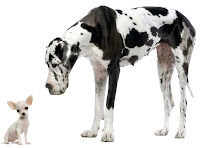The connected company by Dave Gray @davegray #sbs2011
 What is social business? What does it look like? Dave Gray shares his view in napkin sketches.
What is social business? What does it look like? Dave Gray shares his view in napkin sketches.Life expectancy of a S&P 500 company is getting shorter. It's 15 years now.
Companies are complex systems (shown by complex hierarchies). There are companies that make sense of other companies because they are so complex. Think Microsoft and government.
For every extra employee your profit goes down. For every 3 employees your profit per employee goes down. It is increasing, but by less and less. Or: diminishing returns.
However productivity goes up in cities when population grows. Why?
We think about companies as machines (stable, little relation to environment), but should start to think about them as organisms. That adapt to the environment.
Companies are made out of people. But they don't live long and can be less productive the larger they get.
Dave refers to Arie de Geus' book The Living Company. His findings are long-living companies are:
- decentralized. Porous boudaries, eccentric edges
- strong identity. Values, culture, beliefs
- active listening. Identify and jump on opportunities
It's the same in work. We split work into separate tasks in processes (dogma). We should design for learning by defining standard protocols and shared services.
Lessons from urban design for social business:
- think at the level of the street & start small, spaces need owners (think community manager), every person needs a place (public/private), jumping off points
- design for emergence & watch, listen, adjust, adapt (lots of small changes)
- manage growth


